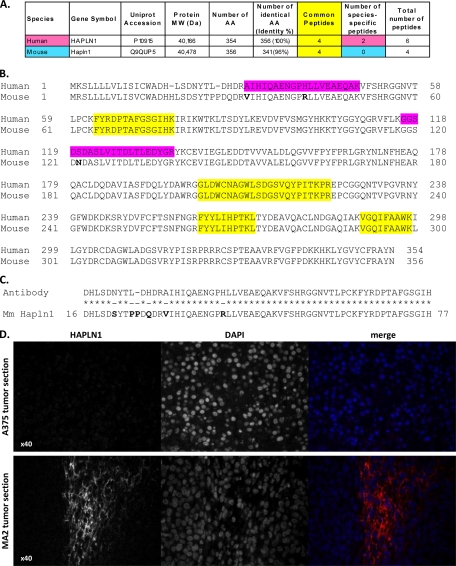Fig. 6.
Hyaluronan and proteoglycan link protein-1 (HAPLN1) is overexpressed in metastatic melanoma and secreted by the tumor cells. A, Numbers of nondistinguishing, species-specific and total peptides identified in the two metastatic tumor samples. In addition to peptides common to both the human and murine proteins, two human-specific peptides and no murine-specific peptide were detected, indicating that HAPLN1 is secreted by the tumor cells. Moreover, the two proteins are 96% identical in sequence so there are only a few diagnostic peptides. B, Sequence alignment of human and murine HAPLN1. Peptides identified by LC-MS/MS are highlighted in yellow if the peptide is identical in the two species and in pink if the peptide matches the human protein sequence. The identification of human-specific peptides and not closely related mouse peptides suggests that HAPLN1 is secreted exclusively by the tumor cells. C, Alignment of the sequence of the human protein fragment (amino acids 16 to 75) used to generate the anti-HAPLN1 antibody with the murine protein sequence (amino acids 16 to 77), which is 89% identical. D, HAPLN1 is up-regulated in MA2 tumors. Immunohistochemistry using anti-HAPLN1 antibody of A375 (upper panel) and MA2 (lower panel) tumor sections. Left panels show HAPLN1 staining, middle panel DAPI staining of the nuclei and right panels merge images.

